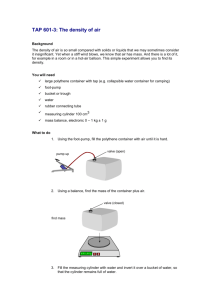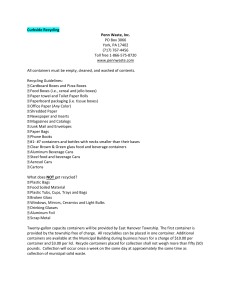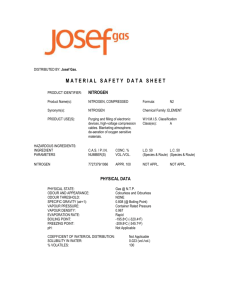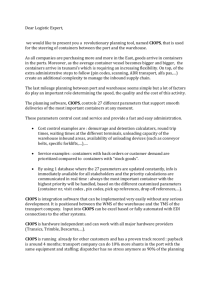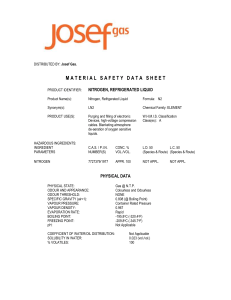FPASA Bulletin SF 01.Liquid Petroleum Gas and the Fire Hazard.doc
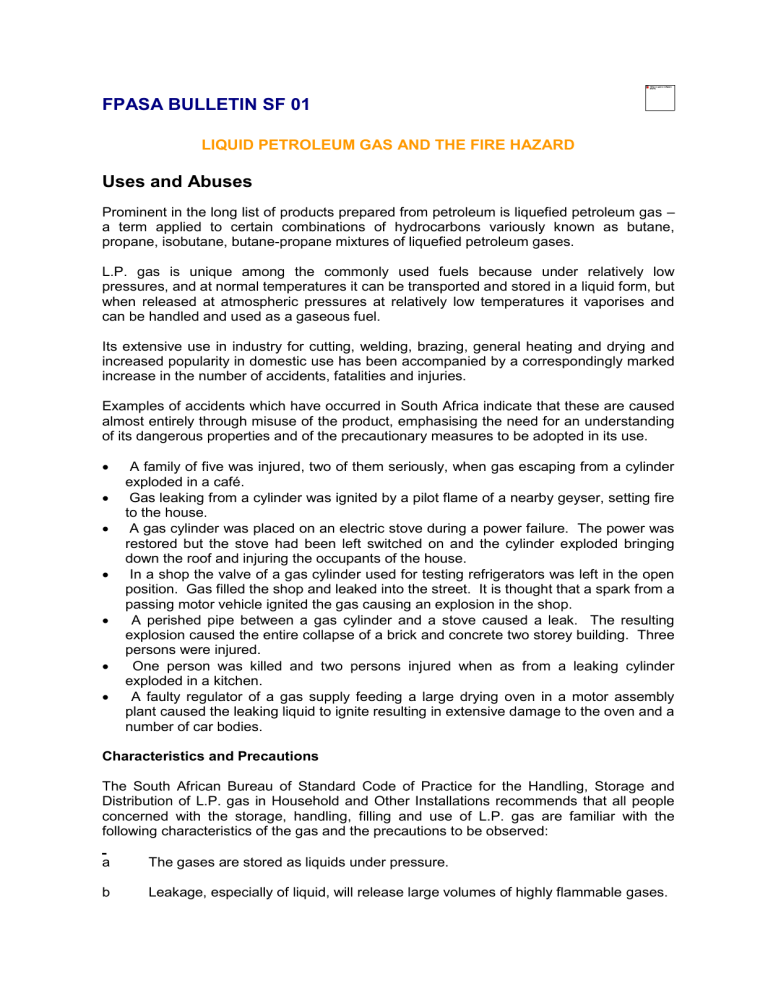
FPASA BULLETIN SF 01
LIQUID PETROLEUM GAS AND THE FIRE HAZARD
Uses and Abuses
Prominent in the long list of products prepared from petroleum is liquefied petroleum gas – a term applied to certain combinations of hydrocarbons variously known as butane, propane, isobutane, butane-propane mixtures of liquefied petroleum gases.
L.P. gas is unique among the commonly used fuels because under relatively low pressures, and at normal temperatures it can be transported and stored in a liquid form, but when released at atmospheric pressures at relatively low temperatures it vaporises and can be handled and used as a gaseous fuel.
Its extensive use in industry for cutting, welding, brazing, general heating and drying and increased popularity in domestic use has been accompanied by a correspondingly marked increase in the number of accidents, fatalities and injuries.
Examples of accidents which have occurred in South Africa indicate that these are caused almost entirely through misuse of the product, emphasising the need for an understanding of its dangerous properties and of the precautionary measures to be adopted in its use.
A family of five was injured, two of them seriously, when gas escaping from a cylinder exploded in a café.
Gas leaking from a cylinder was ignited by a pilot flame of a nearby geyser, setting fire to the house.
A gas cylinder was placed on an electric stove during a power failure. The power was restored but the stove had been left switched on and the cylinder exploded bringing down the roof and injuring the occupants of the house.
In a shop the valve of a gas cylinder used for testing refrigerators was left in the open position. Gas filled the shop and leaked into the street. It is thought that a spark from a passing motor vehicle ignited the gas causing an explosion in the shop.
A perished pipe between a gas cylinder and a stove caused a leak. The resulting explosion caused the entire collapse of a brick and concrete two storey building. Three persons were injured.
One person was killed and two persons injured when as from a leaking cylinder exploded in a kitchen.
A faulty regulator of a gas supply feeding a large drying oven in a motor assembly plant caused the leaking liquid to ignite resulting in extensive damage to the oven and a number of car bodies.
Characteristics and Precautions
The South African Bureau of Standard Code of Practice for the Handling, Storage and
Distribution of L.P. gas in Household and Other Installations recommends that all people concerned with the storage, handling, filling and use of L.P. gas are familiar with the following characteristics of the gas and the precautions to be observed: a The gases are stored as liquids under pressure. b Leakage, especially of liquid, will release large volumes of highly flammable gases.
f c L.P. gas vapours become flammable when mixed with air. Gas-air mixtures containing approximately 1,5-10 percent by volume of L.P. gas are flammable. If a large enough volume is dispersed in the atmosphere as to reach flammable proportions throughout, ignition of the mixture would result in a rate of combustion of near-explosive intensity, an explosion will occur when such gas-air mixtures are ignited while contained in a confined space. d The gases are heavier than air and will flow along the ground or through the drains and may be ignited as a considerable distance from the source of leakage; low level ventilation is therefore of the utmost importance. e L.P. gases are non-toxic but they may induce headaches and dizziness when inhaled, and should be avoided at all times.
Liquid L.P. gas by its rapid vaporisation and consequent lowering of the temperature can cause severe cold burns when in contact with the skin. Protective clothing, such as gloves, goggles, aprons and gummed boots should be worn when there is any possibility of such contact. g A container that has held L.P. gas and is ‘empty’ is dangerous. In this state the internal pressure is approximately atmospheric and if the valve leaks or is left open, air can diffuse into the container and form a flammable or explosive mixture.
Furthermore, an empty container which does not yield when the valve is opened may in fact not be quite empty. In cold weather the heavier fractions of the liquid may not vaporise and will remain in the container. All containers that are empty or appear to be empty should be handled with the same care as a full container. h Valves should be kept closed at all times when containers are not in use.
Action in Emergency
General Action
1.
Call the local fire brigade immediately
2.
If possible, cut off or reduce the supply of L.O. gas
3.
Evacuate and cordon off a reasonable area
4.
Avoid ignition of gas clouds by removing the ignition hazards.
5.
Approach downwind any fire or escaping gas. Avoid coming in contact with L.P. gas (saturated clothes may subsequently ignite, and liquid coming in contact with the skin will cause severe cold burns). Wash off any contamination immediately.
6.
Control a leak or fire and avoid container rupture, by applying a spray of water to the heat exposed surfaces of containers.
7.
Remember that containers involved in a fire (either directly or because they are exposed to heat and flames) may discharge their contents through release devices, or rupture with explosive force.
\ Gas Leakage Without Fire
The leaking container shall, unless remedial action (such as closing the valve) can be effected on the spot, be identified and dealt with.
Gas Leakage With Fire
1.
Unless a danger of flame impingement on other containers exists, no attempts shall be made to extinguish the fire before the source of leakage has been determined and it is known that the leakage can be stopped after the fire has been extinguished. For example, a fire occurring at the outlet of a container valve may be extinguished by a portable extinguisher, provided that the valve is then immediately closed or the container is promptly removed to a place where gas leakage will not result in subsequent explosion.
2.
Where it is not possible to extinguish the fire and either stop the leakage or remove the leaking container promptly, all containers shall be cooled by adequate water spraying.
Containers Exposed to Fire
1.
If containers which do not incorporate safety release devices are exposed to severe fire conditions, adequate volumes of water (supplied as spray) will in all probability prevent rupture from over pressure. Nevertheless an assessment should be made of the possible risk of ruptures. Such an event occurs with explosive force and can endanger life and property over a considerable area.
Flame impingement on containers or the presence of radiant heat from a nearby source should be regarded as an extremely dangerous condition.
2.
Containers not involved in or affected by the fire should be removed to a safe area or, alternatively, if such a course is not possible, the container should be kept cool by applying adequate quantities of water as a gently spray. If containers are equipped with release devices and fire exposure is severe, care should be taken to avoid jets of gas from these devices ( eg: by standing well clear) such jets may send over a distance of over 10 m.
The following Codes of Practice and Standard Specifications relating to Liquid Petroleum Gas are
obtainable from the: SA Bureau of Standards, Private Bag X191, Pretoria, 0001
SABS 689/691 :
SABS 087/Part 1
SABS 087/Part 6
SABS 087/Part 7:
Standard Specifications for Liquefied Petroleum Gas
: Code of Practice for the Handling, Storage and Distribution of
L.P.Gas, in Household and Other Installations (Domestic)
SABS 087/Part 2 : Installations in Mobile Units and Small non-permanent Buildings
SABS 087/Part 3
SABS 087/Part 4
:
:
Bulk L.P. Gas Storage at Consumers Premises
L.P. Gas Installations in Boats, yachts and Other Vessels
: L.P. Gas as an Engine Fuel
Code of Practice for Retail Outlet and Similar L.P. Gas Filling Sites for
Small Containers
Published by
Fire Protection Association of Southern Africa
(Incorporated Association not for Gain)]
(Reg.No. 73/00022/08)
P O Box 15467
1472 Impala Park


